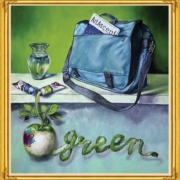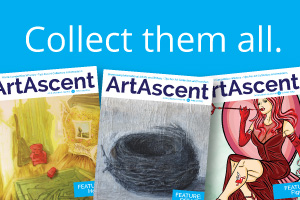Increasing the value of investment in an art collection
Every collector wants his or her carefully chosen art works to increase in value. Some seek the reward of having their pictures, sculptures, prints or photographs provide, over time, increase in the aesthetic pleasure they give. Others want to have their “good eye” confirmed by a rise in the monetary value of their investment. While it is quite possible for a collector to achieve both goals, this article deals with how to get maximum capital appreciation from an investment in art.
Collectors of art for investment purposes, whether they are corporations or individuals, have to pay the same kind attention to their acquisitions as they would to any other investment. This is can be pure pleasure. However there are certain measures, not all of them as much fun as buying what you like, that will work to increase value.
As a first principle it should be understood that a collection is more than the sum of its parts. An artwork from a good collection has added value. The best collections, those with potential for the highest return on investment, are formed by collectors who specialize in the works of a single artist, works in a specific media or style, or works created at a particular time or in a particular place or region. Excellent collections are comprised of works carefully chosen so that they complement each other and contribute to the chosen overall theme. The best way to understand the idea of a focus for a collection is to regularly attend exhibitions at galleries and museums and consider how the organizers have selected the works on display to advance a significant theory or idea.
Because a collection is not a group of unrelated works, those collections with the most potential as an investment vehicle will have a clearly defined premise and include works of the highest quality. The risk associated with capital appreciation in such a coherent collection will be spread over a number of works. This is equivalent to portfolio diversification. However, unlike stocks and bonds, the individual artworks in a collection, while they appreciate at different rates, all benefit in value by having been owned by a corporation or individual noted for excellence in art acquisition. Value is added to art through its association with respected collectors and well-known collections.
Intelligent buying is only the first step toward ensuring that your investment will grow. It is essential that accurate and complete records be kept for each purchase, including notes on why a particular work was acquired. These should indicate how the new piece fits into and enhances the strength of the collection. Documentation is important for insurance purposes, but it also immediately increases the value of the artwork. Proof of this is evident in the secondary market where, at auction houses, more detailed information in a sale catalog translates into a higher knockdown price.
It is well understood that conserving artwork is critical to preserving investment value. When a work is sold or donated, its fair market value will be partly determined by its condition. Ideally a work will be kept in exactly the same state as when it was purchased. Every collector should seek expert advice on the preservation of his or her collection.
The monetary value of art depends on how it is regarded by its audience. The more people who see a collection or pieces from it, the more likely it will increase in value. Corporate collectors understand this. Not only do they use their art to enhance their brand but they also increase the collection’s value by exhibiting it in offices and reproducing it in print and other media.
Most corporate and private collectors work to augment the value of their investment by talking regularly with dealers, other collectors and curators in exhibiting institutions. This networking has the dual goal of obtaining invaluable advice on the art market and promoting one’s own collection. The best possible result will be a request to exhibit the collection publicly or to borrow a work or several works for a show. The fact that a serious collector is organized and has comprehensive documentation of the collection will encourage exhibiting institutions to make requests for loans. Simply put, promoting a collection by whatever means necessary will increase its value.
Art collecting as an investment is the same as investing in bonds or stocks. Nothing can be guaranteed, but it is a lot more rewarding in terms of enjoying your asset. Over time, art collecting will be profitable if works of the highest quality are chosen according to well-thought-out criteria. On disposal of an entire or partial collection by sale or donation, the price realized by individual pieces will depend on their condition, how thoroughly they are documented and how often they have been exhibited publicly.
Remember, whether you make huge profits or not, art collecting is an enjoyable activity. It’s a never-ending learning process through which you will encounter a variety of interesting people and, best of all, you will be surrounded by fascinating art.
By Dr. Alan McNairn








